Q
What is the Battery Size of Suzuki Jimny?
In the Malaysian market, the common battery size for the Suzuki Jimny is 46B24L. It's a 12V lead - acid battery suitable for most Jimny models, including the latest third - and fourth - generation versions. The capacity of this battery usually ranges from 35Ah to 45Ah, and the cold cranking amps (CCA) are around 300A to 400A, which can meet the starting requirements of the Jimny in a tropical climate.
For Malaysian car owners, when choosing a battery, in addition to ensuring the size matches, they also need to pay attention to the high - temperature resistance. Given the local hot climate, it is recommended to give priority to products from well - known brands like Panasonic, Bosch, or GS Yuasa. These brands usually have better heat - dissipation designs and longer service lives.
Moreover, it's also important to regularly check the battery's health, especially after long - term parking or frequent short - distance driving, to avoid starting difficulties due to insufficient battery power. If the car owner plans to upgrade the audio system or install additional electronic devices, they may need to consider a battery with a higher capacity to ensure stable power supply.
Special Disclaimer: This content is published by users and does not represent the views or position of PCauto.
Related Q&A
Q
Is Jimny good for city driving?
As a compact SUV, the Suzuki Jimny holds its own pretty well for city driving in Malaysia. That 3.7-meter short body is a total lifesaver for squeezing through tight lanes and nailing those tricky parking spots in congested cities like KL. The 1.5L naturally aspirated engine paired with the 4AT gearbox isn't going to win any drag races, but it's got enough low-end torque to handle stop-and-go city traffic without breaking a sweat – though you will notice it drinks a tiny bit more fuel than your average urban SUV.
Let's talk ride quality: the Jimny's body-on-frame construction and solid axle suspension can feel a bit jiggly on smooth tarmac, but that generous ground clearance? It laughs at Malaysia's potholed roads and those annoying temporary roadblocks you find everywhere. A heads-up though – the back seat is pretty snug. It's perfect for 1-2 people commuting daily, but if you're regularly ferrying around a full crew, comfort might take a hit.
Here's where the Jimny really shines, though – off-road capability, which is a huge plus for adventure-loving owners. Weekends up to places like Cameron Highlands or Fraser's Hill? This little rig handles those mountain roads like a champ. Over in the Malaysian market, Jimnys hold their value surprisingly well, and servicing is generally straightforward – just be prepared that original parts can be a touch pricier than your run-of-the-mill city cars.
Q
Does Jimny have resale value?
In the Malaysian market, the Suzuki Jimny actually maintains a relatively high resale value as a used car, which is primarily attributed to its unique design, solid off - road capabilities, and relatively limited supply. As a compact, hardcore off - roader, it has no direct local competitors. Plus, with that classic boxy shape and impressive go - anywhere ability, it has a large fan base among off - road enthusiasts and buyers looking for something with personality—so demand for used ones stays steady. The high prices of new cars and long waiting periods also indirectly support the resale values of second - hand vehicles.
Based on actual market data, a 3 - year - old Jimny typically retains about 65% to 75% of its original price, which outperforms city SUVs in the same price bracket. It's worth noting, however, that the actual resale value is influenced by the vehicle's condition, mileage, and any modifications made. Unmodified models with complete factory service records are undoubtedly more in demand in the used car market.
When Malaysian consumers purchase a niche vehicle like this, in addition to considering the resale value, they should also take into account their actual usage scenarios. The on - road comfort and interior space of the Jimny cannot compare with those of mainstream SUVs, however, its off - road capability is second to none among niche vehicles. This unique positioning is precisely what enables it to maintain its value so effectively.
Q
Where is Jimny built?
The Suzuki Jimny is currently rolling off the production lines at Suzuki's Hamamatsu plant in Japan, and this classic compact off-roader has built a global fanbase – Malaysia included – thanks to its tough-as-nails body-on-frame construction and impressive go-anywhere capabilities. Underpinning that rugged character is a ladder frame chassis paired with a part-time 4WD system, making it a solid fit for Malaysia's diverse landscapes. Whether you're navigating city streets or tackling weekend adventures, the Jimny handles it all with ease.
What really stands out, though, is how this little SUV punches above its weight when the going gets rough. Its generous ground clearance and short wheelbase translate to exceptional off-road articulation, which is a big reason it's a hit for tackling Malaysia's rainforests and rural tracks. For Malaysian buyers, the Jimny's appeal goes beyond just off-road prowess. Its relatively affordable price tag and low running costs are major draws, and when you factor in Suzuki's well-established after-sales network locally, it becomes the perfect pick for folks who want genuine off-road fun without breaking the bank. And in recent years, as Malaysian buyers have shown a growing appetite for more individualistic rides, the Jimny's retro-cool looks and massive potential for customization have only added to its popularity, especially among younger drivers.
Q
Are Jimny Motors reliable?
The Suzuki Jimny has built a solid fan base among Malaysian drivers, thanks to its tough, no-nonsense design and impressive off-road capabilities – it’s especially well-suited for the country’s varied terrain. This little SUV packs a 1.5L naturally aspirated engine that delivers smooth power while keeping fuel costs in check, and with relatively low maintenance expenses, it’s a smart pick for budget-conscious buyers. When it comes to reliability, the Jimny has a proven track record; its chassis and mechanicals have stood the test of time with minimal issues. That said, its lightweight body does mean some wind noise at highway speeds, and the interior leans more toward practicality than luxury – though for folks who prioritize function over frills, that’s hardly a dealbreaker. The Jimny also holds its value well in Malaysia’s used car market, which speaks volumes about its dependability. If you’re frequently tackling rural roads or light off-roading, the Jimny is definitely worth a look – just remember to keep up with regular servicing to keep it running strong for years to come.
Q
Why is Jimny famous?
The Jimny is renowned for its unique rugged off - road design, reliable performance, and compact, nimble body – traits that make it stand out in Malaysia's varied terrain. As a Suzuki classic, it features a body - on - frame construction, a part - time four - wheel - drive system, and ample ground clearance, enabling it to handle mud, gravel, and even light climbing trails with ease. No wonder it's a hit among off - road enthusiasts and outdoor adventurers.
Then there's its compact size, which is perfect for Malaysia's tight city streets and rural backroads. Coupled with decent fuel efficiency, it achieves a good balance between daily commuting and weekend adventures. In recent years, the Jimny's retro boxy looks have also attracted the attention of fashion - conscious individuals, making it a popular choice for customization and modifications.
Furthermore, its strong resale value in the used car market – a testament to its solid reputation and durability. For Malaysian buyers, the Jimny isn't just a practical off - roader; it's a lifestyle symbol, ideal for drivers who crave freedom and adventure.
Q
Why was Jimny discontinued?
So, why did the Jimny get the axe in Malaysia? Let's break it down. The main culprit is the ever-tightening global emissions regulations, especially the Euro 6 standards. The third-gen Jimny (JB74) with its 1.5L engine just couldn't keep up with the latest green demands, and Suzuki hasn't rolled out a compliant upgrade specifically for Southeast Asia yet.
On top of that, the Malaysian government's recent tweaks to import duties and certification processes have jacked up the cost of bringing in small off-roaders, chipping away at the Jimny's competitiveness. Don't get me wrong, the Jimny's a total legend among off-road enthusiasts – that short wheelbase and body-on-frame setup are pure off-road DNA. But let's be real, those same traits make it a bit of a handful for daily city driving and not the most fuel-sipper out there.
Now, the fourth-gen Jimny is out in some markets with the necessary updates to meet new rules. But here's the thing: Malaysians are pretty price-sensitive, and the SUV segment is fiercely competitive. So Suzuki's probably hitting pause on bringing it in for now.
If you're a Malaysian off-road fan craving something small but capable, don't despair. Keep an eye on alternatives like the new Toyota Land Cruiser or Mitsubishi Pajero Sport. They've both got the off-road chops and are fully compliant with local regulations.
Q
Can you daily drive a Jimny?
The Suzuki Jimny is a super popular compact SUV, especially here in Malaysia, where its toughness and off-road chops are widely praised. But whether it’s a good fit as a daily driver really comes down to your personal needs.
On the plus side, the Jimny’s tiny footprint makes it a breeze to zip through tight city streets and squeeze into those impossible parking spots. And let’s not forget that rugged chassis and generous ground clearance—perfect for tackling some of Malaysia’s less-than-perfect road conditions when you venture out of town.
That said, there are trade-offs. The interior space is definitely on the snug side, especially in the back seat and boot. If you’re a family driver or someone who regularly hauls stuff, you might find it a bit limiting. Also, the suspension is on the firm side, and wind noise can get noticeable on longer highway stretches, which might take a toll on comfort.
So, if your daily grind is mostly city commuting with the occasional weekend escape, the Jimny could be a solid pick. But if you’re often ferrying passengers or lugging bulky items, you might want to check out something with more cargo room.
Malaysia’s weather can be pretty unpredictable too, and the Jimny’s 4WD system is a big plus when the rains hit or roads get muddy, giving you that extra stability.
All in all, the Jimny shines for folks who love its unique, boxy style and appreciate its off-road potential. But if comfort and practicality are your top priorities? Definitely take it for a test drive before making up your mind.
Q
Is Jimny a safety rating?
The Suzuki Jimny's safety ratings vary depending on the market and testing authority. Take ASEAN NCAP as an example – the 2020-tested Jimny scored a 3-star rating, largely constrained by its compact body structure and relatively basic safety kit. That said, it still comes standard with key essentials like dual airbags, ABS, and ESP. For Malaysian buyers, the Jimny's biggest draws are its off-road capability and legendary durability. However, if high-speed crash protection is a top priority, it's wise to check out more localized test data.
Road safety in Malaysia really comes down to how you plan to use the vehicle – city commuting and off-roading have very different requirements. The Jimny's stiff body design holds up reasonably well in low-speed impacts, but drivers should definitely factor their own driving habits into the decision. Also, keep in mind JPJ's regulations on vehicle modifications, especially when upgrading for off-roading – you'll want to make sure those mods don't compromise the original safety structure.
Other models in the same price bracket, like the Perodua Ativa, might offer more comprehensive active and passive safety features. Before making a purchase, it's recommended to compare the MIROS safety reports of multiple models.
Q
Are Jimny good on fuel?
The Suzuki Jimny, as a compact off - roader, achieves a relatively good balance when it comes to fuel economy, making it well - suited for Malaysia's mix of city streets and suburban roads. According to official data, the latest Jimny packs a 1.5L naturally aspirated engine, mated to either a 4 - speed auto or 5 - speed manual gearbox. The combined fuel consumption is approximately 6 - 7L/100km, although this figure may vary slightly depending on driving habits and road conditions. This is actually above the average level among off - roaders of its class.
Certainly, its boxy shape and 4WD system increase wind resistance and add some weight, however, the lightweight body and small - displacement engine effectively offset some of the increased fuel consumption. Compared with the common city SUVs seen everywhere in Malaysia, the Jimny consumes slightly more fuel. However, when considering its excellent off - road capabilities – things like that ladder frame chassis and three - link suspension – plus its unique personality, this small difference is entirely acceptable.
If you aim to further improve its fuel efficiency, here's a tip: maintain the proper tire pressure, avoid excessive modifications that add significant weight, and use the 4WD mode wisely – switch to 2WD on paved roads. However, it's worth noting that when driving on Malaysia's hilly terrain or during the rainy season with challenging road conditions, the Jimny's off - road prowess really shines. In such situations, a slight increase in fuel consumption is well worth it for the exceptional off - road capability it provides, offering excellent value for money.
Q
Can Jimny be a family car?
The Suzuki Jimny, that boxy little off-roader, has built a solid fan base among outdoor enthusiasts thanks to its rugged looks and capable 4x4 system. But if you're eyeing it as a family hauler in Malaysia, there are pros and cons to weigh. With a 2345mm wheelbase and that snug rear seat, it works fine for small families on short trips. Cramming four adults in for long hauls, though? Things are gonna get pretty tight back there.
On the flip side, its generous ground clearance and ladder-frame chassis mean it can handle those rough-and-tumble rural roads you sometimes find around Malaysia. The 1.5L naturally aspirated engine paired with the 4-speed auto? Fuel economy is just so-so—official figures say around 6.4L/100km—but maintenance costs are low, which is easy on the family budget. It's worth mentioning that the 2023 model comes standard with safety features like autonomous emergency braking, making it more city-friendly than many of its off-road-focused rivals.
If your family has more than four members or you regularly take long road trips, you might be better off with a more spacious family SUV. But if your crew is smaller and you occasionally crave some light off-roading action, the Jimny's unique tough-guy charm and modification potential still make it a compelling pick. And given Malaysia's sweltering climate, springing for the factory air-conditioning upgrade kit is a smart move to keep those in the back seat from melting.
Latest Q&A
Q
What is the range of the Mercedes EQB 2022?
The 2022 Mercedes-Benz EQB offers an approximate all-electric range of 419 kilometers in the Malaysian market, based on the WLTP standard. Of course, your actual mileage may vary depending on driving habits, road conditions, and weather. Powering the EQB is a 66.5 kWh lithium-ion battery pack, which supports 100 kW DC fast charging. This means you can get from 10% to 80% charge in around 30 minutes – perfect for those daily commutes around Malaysian cities or even a quick weekend getaway.
As part of the Mercedes-EQ family, the EQB carries forward that signature Mercedes-Benz luxury feel. One standout feature is the availability of a 7-seat configuration, which is pretty rare in this segment of electric SUVs. Good news for folks here: the EQB handles Malaysia's tropical climate surprisingly well, with minimal impact on battery performance. So, you won't have to lose sleep over excessive battery degradation due to the heat.
It also comes with an intelligent energy recovery system, which helps squeeze out even more range by recapturing kinetic energy. If you're a Malaysian consumer thinking about making the switch to electric, besides just looking at the range figures, it's worth checking out the local charging infrastructure. The good news is that major cities in Malaysia are steadily improving their charging networks, and Mercedes has also rolled out exclusive charging services at some of their dealerships.
Q
How much is the Mercedes EQB 2022?
The 2022 Mercedes-Benz EQB starts at approximately RM278,888 in the Malaysian market, with the exact price varying depending on the chosen trim level and optional extras. As a pure electric SUV under Mercedes' EQ lineup, the EQB is offered in two variants: the EQB 250 and the EQB 350 4MATIC, each equipped with electric motors of different power outputs. It boasts a driving range of around 423 kilometers based on the WLTP cycle, making it a solid pick for consumers who want to blend luxury with eco-friendliness.
The Malaysian government offers certain tax incentives for electric vehicles, such as exemptions on import duties and sales tax, which help to bring down the overall purchase cost of the EQB somewhat. Beyond that, the EQB comes loaded with features like the MBUX intelligent infotainment system, a panoramic sunroof, and advanced driver assistance functions, really showcasing Mercedes' technological prowess in the electric mobility space.
For those considering an EV, besides price, the convenience of charging infrastructure is another key factor. Major cities in Malaysia already have a decent number of charging stations, and Mercedes also provides installation services for home wallboxes, further enhancing the overall ownership experience.
Q
How big is the EQB 2022?
The 2022 Mercedes-Benz EQB is a compact seven-seater electric SUV, measuring 4684mm in length, 1834mm in width, and 1706mm in height, with a wheelbase stretching to 2829mm. This size strikes a nice balance—nimble enough to navigate Malaysia's city streets while still offering plenty of room for passengers, making it a solid pick for families. Cargo space is practical too: 495 liters with the rear seats up, and a generous 1710 liters when you fold them down, which handles everything from daily grocery runs to weekend getaways with ease.
For Malaysian buyers, the EQB's electric powertrain isn't just eco-friendly; it also fits well with the country's growing charging infrastructure. With an NEDC range of around 419km, it's more than capable of handling longer trips, say from Kuala Lumpur to Penang, without range anxiety kicking in.
And true to Mercedes form, the EQB doesn't skimp on luxury. The interior uses high-quality materials, and those twin 10.25-inch displays add a tech-forward vibe. Little touches like the inclusion of Type-C charging ports (super common here) and wireless CarPlay show that Mercedes really thought about what Malaysian drivers actually need day-to-day.
Q
How big is the tank on a 2017 Renault Captur?
The 2017 Renault Captur comes with a 45-liter fuel tank, which is slightly above average for a small SUV in its class. That's more than enough for daily commutes and weekend getaways around town. Malaysian drivers can typically expect to squeeze out about 500 to 600 kilometers on a full tank under city conditions, though your actual mileage will depend on how you drive and the traffic you're dealing with.
What's clever about the Captur – being the urban-focused crossover that it is – is how that tank size balances fuel efficiency with real-world usability. Pair that with either the peppy 1.2-liter turbo petrol or the torquey 1.5-liter diesel engine (depending on your market's specs), and you've got a setup that's pretty easy on fuel.
A quick tip for owners: make sure to check that your fuel cap seals properly and that the low-fuel warning light is working as it should. Also, keep in mind that Malaysia's common RON95 petrol works perfectly fine in this car. If you're planning a long drive, especially over in East Malaysia, it's smart to map out your petrol stops ahead of time – some of those remote areas have pretty big gaps between stations. Oh, and don't sleep on the simple stuff: keeping your tires properly inflated and sticking to regular servicing can go a long way in keeping those fuel bills in check. Handy pointers for all you savvy Malaysian drivers out there trying to stretch every ringgit!
Q
How many litres per 100km is a Renault Captur?
The fuel efficiency of the Renault Captur varies depending on the specific trim and powertrain setup. Here in Malaysia, the version you'll mainly find on the market comes with a 1.3-liter turbocharged petrol engine. Official figures peg the combined fuel consumption at around 5.6 to 6.0 liters per 100 kilometers, but remember, real-world numbers can swing based on how you drive, the roads you're on, and how much you're hauling. This little SUV has won over city dwellers with its thrifty nature and nimble handling.
It's worth pointing out that Malaysian drivers need to factor in our local conditions too – think stop-and-go city traffic or cranking up the AC during those hot spells, both of which can take a bite out of fuel economy. Rivals like the Honda HR-V or Toyota C-HR are in the same ballpark, typically returning between 5.5 to 6.5 liters per 100 kilometers. My advice? Always take it for a test drive to get a feel for the real-world mpg, and keeping up with regular maintenance plus proper tire pressure will help keep that fuel efficiency in top shape.
View MoreRelated News
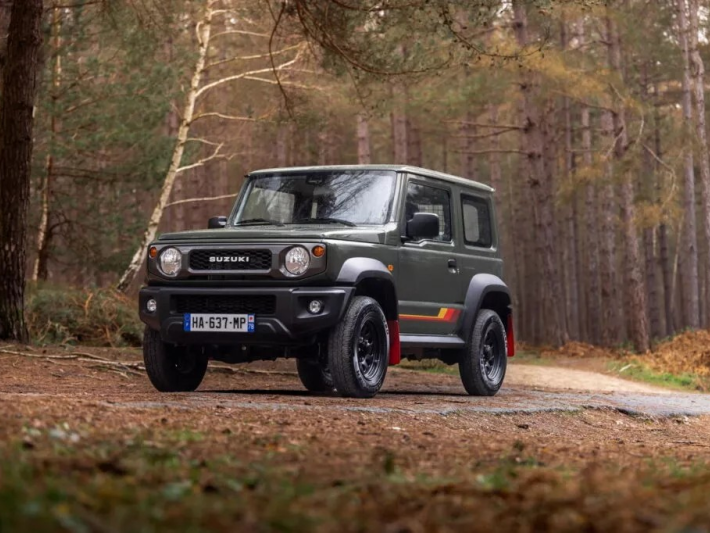
Only 55! Limited-Edition Jimny Coming to France
MichaelJun 20, 2025
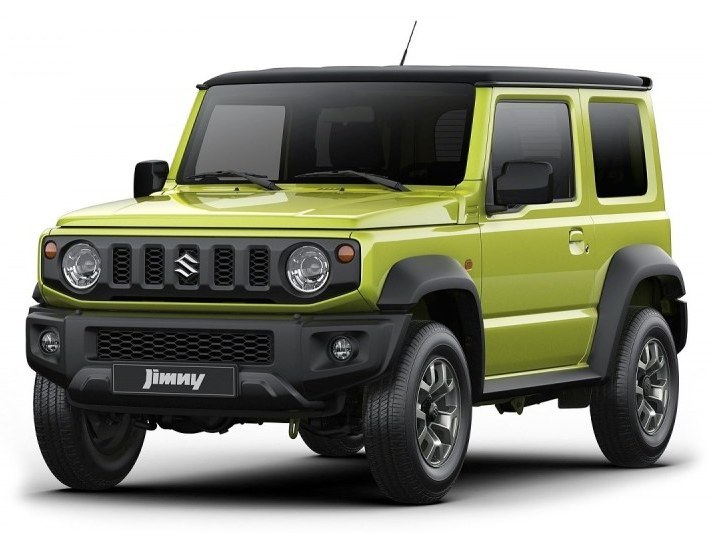
Suzuki Jimny's Trusted 4WD System: Unleash Off-Road Thrills
Kevin WongMay 13, 2025
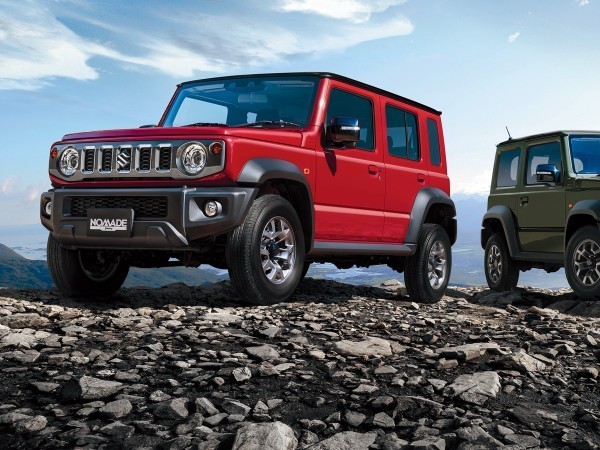
Jimny Nomade Japan released, over 50,000 orders in 4 days, consumers need to wait for 3.5 years
MichaelFeb 5, 2025

Suzuki Jimny Arctic Launch: Limited Time Offer to Save 7000 Ringgit!
Kevin WongNov 18, 2024
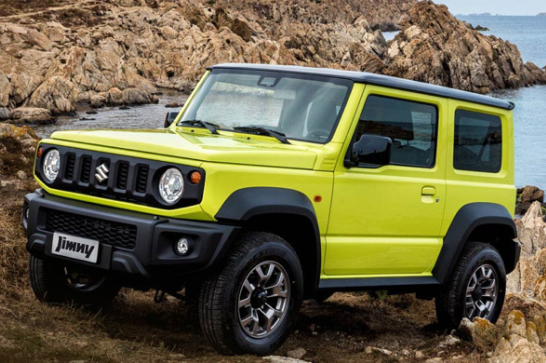
Getting More Expensive, 2024 Suzuki Jimny Starts at RM 174,180. Is it a Financial Wizard?
LienApr 18, 2024
View More












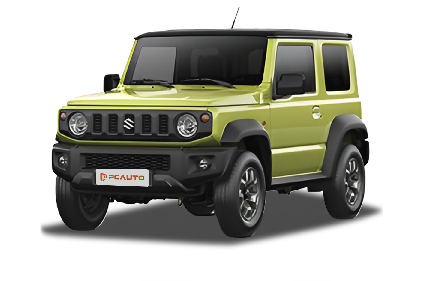



Pros
Cons